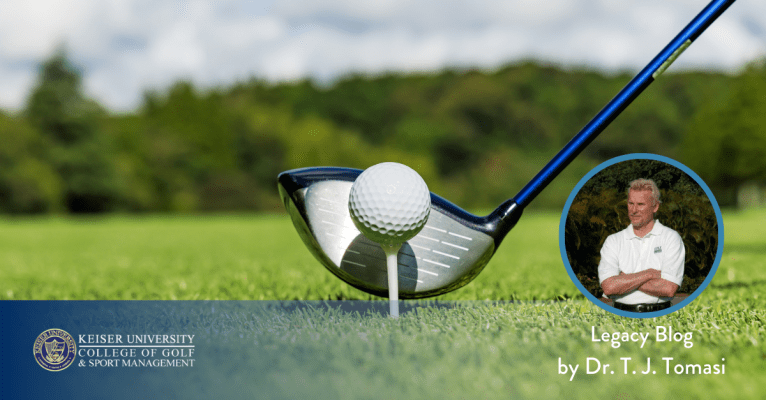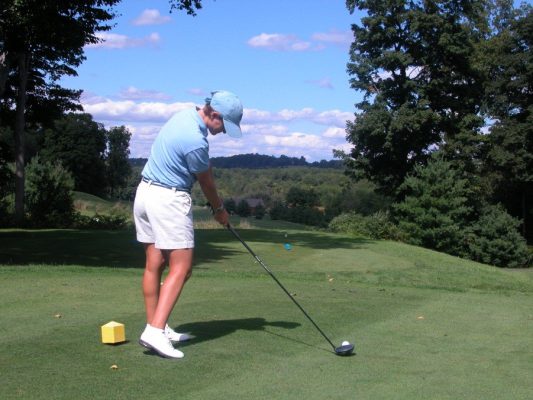The Body Angles of Address and Impact are Not the Same

A Legacy Post by Keiser University College of Golf Senior Faculty and Director of Research Dr. T. J. Tomasi (1940-2023)
What is the Golf Address Position?
In golf, the term “address” refers to the initial stance and positioning of a golfer before initiating a swing. It is the starting point of the golf swing and sets the foundation for the entire motion. At address, several key elements come into play, including the alignment of the body, the placement of the feet, the grip on the club, and the positioning of the ball relative to the golfer’s stance. The golfer’s feet should be shoulder-width apart, with the weight evenly distributed between them. The knees are typically flexed slightly to promote stability and mobility throughout the swing. Additionally, the golfer’s shoulders should be square to the target line, and the clubface should be aligned perpendicular to the intended path of the ball. Achieving a proper address position is essential for consistency and success in the golf swing, as it sets the stage for generating power, accuracy, and control over the ball’s flight.
How to Address the Ball in Golf
Even today, some antiquated instruction preaches that impact should mirror your address position, but this is obviously not correct. There are three areas of major importance illustrated from our “down the target line view,” namely, our pro model’s knees, hips, and shoulders.

At address, the hips, shoulders, and knees are parallel to the target line.

At impact, the shoulders are closed to the hips but open to the target line.
Note that impact is so much more dynamic than address.
Golf Swing Position at Impact
In golf, the body angles at address and impact play a crucial role in determining the quality and consistency of a golfer’s ball-striking ability. At address, the proper alignment of the knees, hips, and shoulders sets the foundation for an effective swing. The knees should be flexed slightly, providing stability and balance while allowing for a fluid weight transfer during the swing. Meanwhile, the hips should be tilted slightly forward, promoting a neutral spine position and enabling efficient rotation throughout the swing. Lastly, the shoulders should be aligned parallel to the target line, ensuring proper alignment and facilitating a square clubface at impact.
As the swing progresses from address to impact, maintaining the integrity of these body angles becomes paramount for generating power and achieving accuracy. During the downswing, the golfer initiates a dynamic sequence of movements that transfer energy from the lower body to the upper body and, ultimately, to the clubhead. Proper knee flexion, hip rotation, and shoulder alignment enable the golfer to generate maximum clubhead speed while maintaining control over the clubface angle. This synchronized movement pattern ensures that the club strikes the ball with optimal force and precision, resulting in longer drives and more accurate shots.
At impact, the correct positioning of the knees, hips, and shoulders allows the golfer to deliver the club to the ball with the desired trajectory and spin. The knees should remain flexed to stabilize the lower body and prevent excessive lateral movement, while the hips should rotate open to initiate the transfer of weight onto the lead foot. Meanwhile, the shoulders should be fully turned through the ball, promoting a full release of the club and maximizing the transfer of energy into the shot. By maintaining proper body angles throughout the swing, golfers can achieve greater consistency, distance, and control in their ball-striking, ultimately leading to improved performance on the course.
Knees
At address, her knees are parallel left to her intended line of flight. At impact, photo 2, her back knee is about 25 degrees to the left of her original line. Notice how her right heel is off the ground at impact as a consequence of this “opening up” coupled with the transfer of weight to her left foot.
Hips
At address, her hips are parallel left to her intended line of flight, but at impact, her hips are open. As evidence, only one belt loop is clearly visible, while at impact, we can see two. This is proof of a good release of hips that were coiled at the top then snap open — and that spells power.
Shoulders
At address, her shoulders are parallel to her intended line of flight, but at impact, they are open — however, not nearly as rotated as her knees or hips. This is a sure sign that she has saved some of the coil she built up on her backswing for release when it counts—through impact.
Takeaway
To get the feel of the correct impact position and how it differs from address, sole your clubhead behind the ball, then go directly from address to impact without moving the clubhead. Now hold the position and using a mirror, compare it to our model. If you see and feel the correct positions, your chances of getting there for real are greatly improved.
Learn more!
Want more tips? If you want to take your game to the next level, contact our team at Keiser University’s College of Golf & Sport Management today. With our dedication and experience, we can elevate your game to new heights together. Give us a call today at 888-355-4465.














